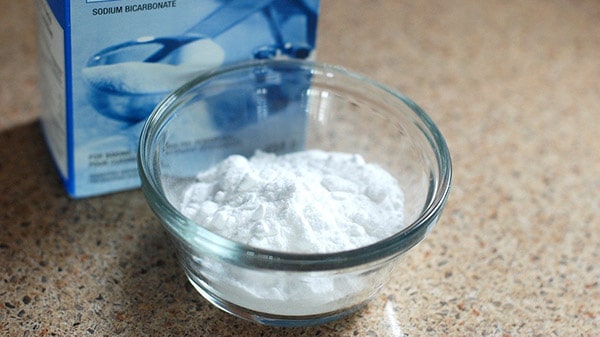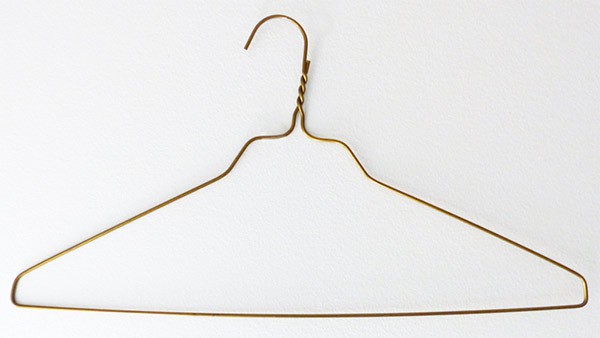A clogged drain is an extremely common issue that you want to resolve fast and effectively. You can find many drain cleaners on the market that are pretty powerful, however, their effectiveness usually comes at a cost: they contain strong chemicals that are potentially harmful to the environment and your family as well.
What if you want to unclog a drain naturally, in an eco-friendly way? The good news is that you don’t have to give up being green if you want to clean your drain: there are some highly effective homemade uncloggers that will do an amazing job when applied properly.
Note that while it’s true that there are many methods out there, only a few of them will deliver acceptable results. I know because I’ve tried most of them. In this article, I’ll share with you the most effective natural ways you can make your drain work again.
Let’s dive in:
Powerful Natural Homemade Drain Cleaners
First of all, let’s make it clear: kitchen sink and bathroom sink (and bathtub drain) clogs contain different substances. While most kitchen sink clogs are caused by food particles and grease, bathroom sink clogs usually result from hair, dirt, and soap scum.
Most of the following homemade cleaners are effective against both types of drain clogs.
Important: Do NOT pour boiling water into a drain if the pipes are made of PVC, Pex, or CPVC because it might melt the joints (source). Also, be careful if you have a porcelain sink: do not pour boiling water (or very hot water) directly on it because that can lead to a crack.
Did you know that not properly cleaned drain pipes are perfect breeding sites for drain flies? Check out our best tips to prevent drain flies from infesting your home!
1. Baking Soda and Vinegar
This one is probably the most popular home remedy you can find to unclog a drain naturally (and on the cheap). In most cases, it can work wonders, however, it’s important to apply it properly otherwise you won’t go far with it.
How it works:
Chemically, baking soda (sodium bicarbonate) is a base while vinegar is an acid. When you mix those two things, carbon dioxide gas is formed and you get an explosive reaction.
Have a look at this video:

We take advantage of this phenomenon when we use baking soda and vinegar to clean a drain: the clog will fall into smaller pieces by the pressure created by the chemical reaction (or at least it will loosen up the blockage).
Then all you have to do is flush your drain with hot water to wash the small clog particles away from your drainage system. Usually, you’ll get the best results if the ratio of baking soda to vinegar is one to two.
What you’ll need:
- 1 cup of baking soda
- 2 cups of vinegar
- 1 pot of hot water
Instructions:
- First, pour a pot of hot water down the drain: it will melt the greasy part of the clog, thus it will increase the effectiveness of the carbon dioxide gas.
- Pour one cup of baking soda into the clogged drain.
- Add two cups of vinegar and cover the drain with a stopper so that the explosive reaction spreads deep inside the drainpipe, and the carbon dioxide can’t escape through the drain opening (this way there’s a much higher chance that the pressure will blast the blockage out of the pipes).
- Let the mixture sit for about 10-15 minutes.
- Flush the drain with hot water.
Pro Tip
If you suspect that the clog is far away from the opening, add two cups of hot water to the vinegar before pouring it into the drain.
If you need a ready-to-use solution or your drain is severely clogged, consider using this eco-friendly, plant-based drain cleaner.
2. Dish Detergent and Hot Water
This homemade cleaner is highly effective against clogs that contain mostly grease or oily substances, therefore you can expect the best results if you use it on kitchen sinks.
On the other hand, dish detergent and hot water usually won’t help you out if you need to deal with a hair-clogged drain.
How it works:
The hot water melts the built-up grease in the pipe, and the dish soap promotes the process by dissolving the fat molecules in the water. This way you can remove a considerable amount of fat from the drainage system that’s blocking the flow of water and narrowing the diameter of the pipe.
What you’ll need:
- 3 tablespoons of liquid dish detergent (preferably a natural one)
- 1 pot of hot (nearly boiling) water
Instructions:
- Pour three tablespoons of liquid dish soap into a pot of hot water and stir the mixture.
- Pour it slowly down the drain and flush with hot tap water.
- If the clog is still there, repeat the process but this time pour the dish detergent into the drain first and let it sit for about 20-30 minutes. Then flush the drain with nearly boiling water.
3. Salt and Baking Soda

This combination is one of my favorite natural drain uncloggers. It has helped me and many friends of mine to clean an obstructed kitchen or bathroom sink pipe.
This DIY method is not only effective against clogs but also works great against bad drain smells. Salt and baking soda are two natural ingredients that can often do wonders.
How it works:
The combination of baking soda and salt loosens and softens the clog that you can destroy by flushing the drain with hot water.
What you’ll need:
- 1/2 cup of salt
- 1 cup of baking soda
- 1 pot of hot water
Instructions:
- Mix the salt with the baking soda in a bowl.
- Pour the mixture into the clogged drain (make sure you remove standing water first) and let it sit for at least two hours. If you suspect that there’s a heavy obstruction you can double the dose and leave it in the pipe for more time before rinsing it.
- Flush with hot water. If the clog is still there or the result is not satisfactory, I recommend that you try the combination of baking soda and vinegar and let the chemical reaction move the sludge out of place.
4. Vinegar and Salt
This is another powerful combination: the acidic vinegar works great together with the salt. The synergistic effect between them will remove most types of blockage in a drainage system.
Both ingredients have antibacterial properties, so you can hit two birds with one stone: the mixture will not only help you get rid of the clog but it also neutralizes unpleasant odors.
How it works:
The mixture of salt and vinegar loosens up the built-up debris and breaks it down into smaller pieces, while the hot water washes the remnants of the clog from its place.
What you’ll need:
- 1 cup of salt
- 2 cups of vinegar
- 1 pot of nearly boiling water
Instructions:
- Mix the salt with the vinegar in a bowl.
- Pour the mixture down the clogged drain and let it sit for about 25-30 minutes.
- Flush the drain with nearly boiling water. Repeat the process if necessary.
5. Cream of Tartar, Salt, and Baking Soda
Slow draining sinks can be easily cleaned by using these natural ingredients. Also, you can use this recipe to prevent clogs: apply the mixture once every two weeks and your drains will remain free of gunk and bad smells.
How it works:
The cream of tartar is a byproduct of winemaking and besides being a common baking ingredient, it also has some powerful cleaning properties. When used in combination with salt and baking soda, it can loosen up and eliminate build-ups and bad odors in the drainpipes.
What you’ll need:
- 1/8 cup of cream of tartar
- 1/4 cup of salt
- 1/4 cup of baking soda
- 15 fl oz nearly boiling water
Instructions:
- Mix the baking soda, salt, and cream of tartar thoroughly in a plastic container. Shake well.
- Pour the mixture down the drain.
- Flush with 15 fl oz of nearly boiling water and let it sit for 15 minutes. If the water still doesn’t flow freely, try the baking soda and vinegar combination.
Enzyme Drain Cleaner – A Ready to Use Natural Solution
Although the above-mentioned homemade combinations are pretty easy to prepare, there might be cases when you need a ready-to-use solution. This is when enzyme drain cleaners come in handy.
Enzyme drain cleaners contain enzyme-producing bacteria, different kinds of enzymes, and sometimes plant extracts instead of toxic chemicals. Most of the work is done by the enzymes that break down organic substances, such as food particles and molds, into smaller pieces in the pipe. They also dissolve hair to some extent.
One major advantage of enzyme drain cleaners over most homemade remedies is that they usually come in a gel formula that is heavier than water so they easily get through standing water.
You can find many enzyme drain cleaners on the market, some of the most popular brands are Green Gobbler, Biokleen, and ECOS Earth Enzymes Drain Cleaner.
If you like DIY natural cleaners, make sure you also check out our article about the most effective homemade natural gym equipment cleaners here.
Simple Tools to Unclog Your Drain Naturally
1. FlexiSnake Sink & Pipe Cleaner
I remember the first time I discovered this little tool. It was a complete game-changer for me as it allows you to clean the drain without dismantling.
The FlexiSnake is as easy as 1-2-3. You just insert the 18-inch wand, give it a spin with the handle, and out comes the gunk. It’s like fishing – but instead of a catch of the day, you’re reeling in hair and grime!
The patented 360° rotation and micro-hooks are genius. They grab onto every bit of hair and filth, leaving your drains clear and free-flowing. And those pesky bends in your pipes? No problem! This tool navigates them like a pro.
One of my favorite features is the disposable wands. Once you’ve pulled out all the nastiness, you don’t have to clean the tool – just toss the used wand and you’re done.
So, if you’re tired of dealing with clogged drains and want a simple, effective solution, give this tool a try. No more chemicals, no more expensive plumber visits, and no more dismantling pipes.
2. Wire Hook

If the clog is not too far from the opening, you can use a piece of wire to pull up or loosen up the blockage. Don’t forget to bend one end of the wire before you start fishing (use a plier to do that).
You can also use a wire coat hanger after straightening it out and bending one end into a hook.
When you’re done with the hook, remove the stopper, insert the hook into the drain and try to pull out as much gunk as you can from the pipe. You will probably find all kinds of stuff there, so it’s a good idea to wear gloves.
When you’re done, flush the drain with hot water.
Note: This method works especially well on clogs with hair.
3. Rubber Plunger
Using a plunger is a classic and proven way to unclog your partially or completely clogged drain without using any chemicals.
In most cases, a plunger can be very effective, sometimes even when you’re dealing with a stubborn clog. However, to get the best result, it’s important to use it properly.
First, remove the stopper and fill the sink halfway with water. In the case of a double sink, cover the other hole with a wet rag (you can also use a stopper).
Then place the plunger over the drain opening and start plunging up and down. Quick and firm movements will lead to the best result.
Note: Water can splash in your eyes during the process, so I suggest you wear goggles.
4. Plumber’s Snake

If the clog is deep in the drainpipe, you won’t go too far with a simple wire hook or a plunger. In this case, you will get much better results with a plumber’s snake (also called a drain auger).
A plumber’s snake is one of the most effective methods to unclog a drain naturally without professional help. However, make sure you always follow the manufacturer’s instructions because it may damage the pipe when used improperly.
A plumber’s snake is typically a long flexible coiled metal wire with a handle on one end. You can insert the snake right into the drain through the hole, however, in some cases you’ll need to remove the P-trap under the sink to get the best result.
By rotating the handle slowly, the snake will go deeper into the pipe, and finally, it breaks through the clog. If you decide on using a plumber’s snake, I would recommend you wear protective gloves and goggles because things can get a little messy sometimes.
Photos: Wikimedia (Frank C. Müller), Wikimedia (Stilfehler)
Save This Infographic:















